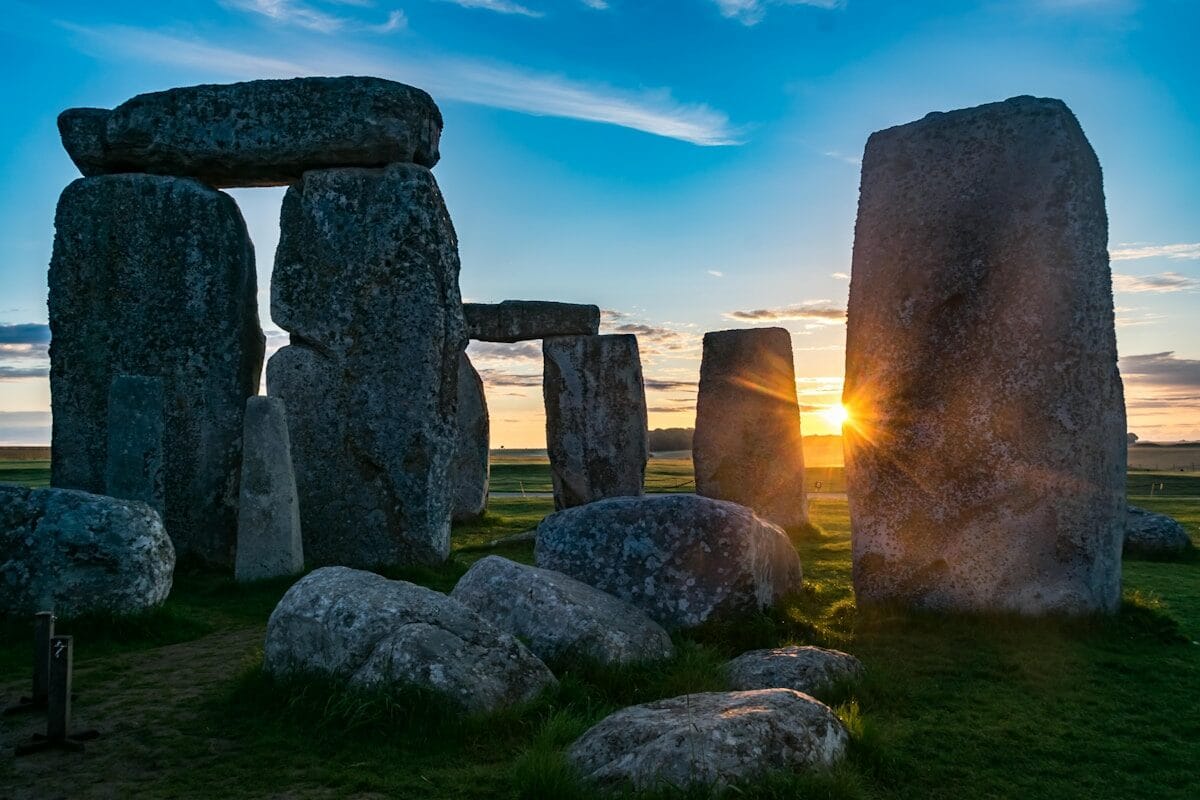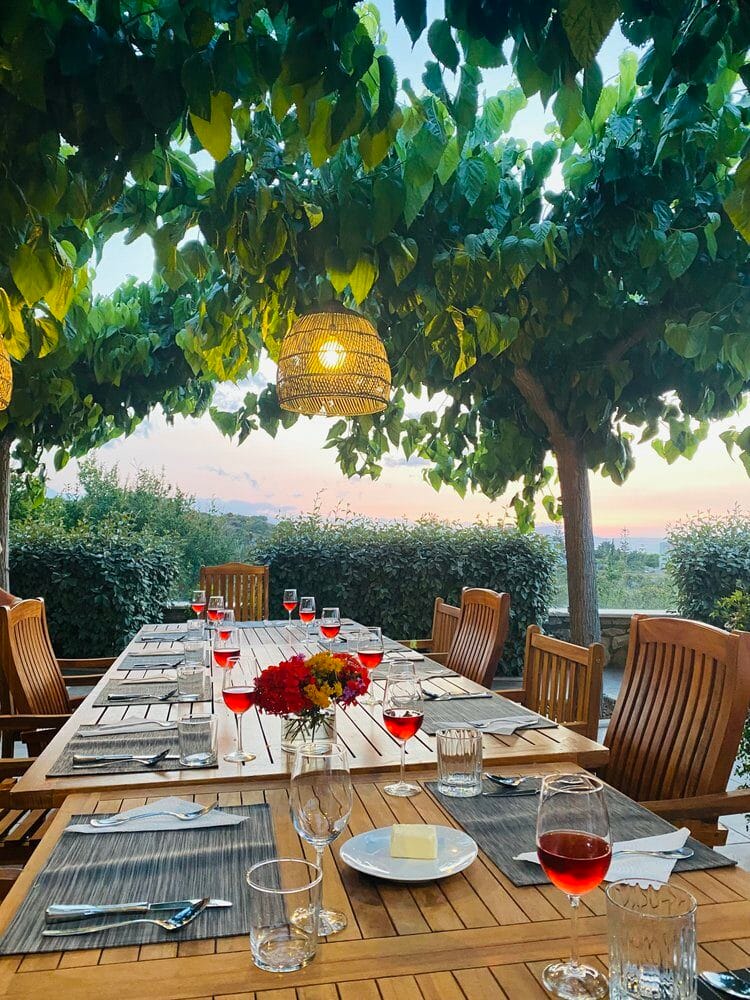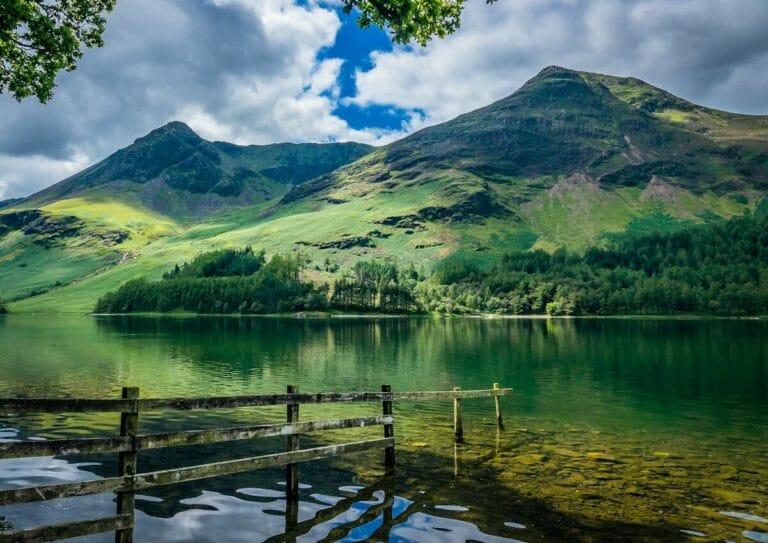Stonehenge at Sunrise: Storytelling and Summer Solstice Magic
Experience Stonehenge’s summer solstice – an ancient celebration of light, heritage and nature that unites thousands in peaceful early morning wonder

The air holds that peculiar chill of an English summer morning as thousands gather in the pre-dawn darkness, their breath visible in the cool mist. Torchlight flickers across people walking around me, same faces painted with ancient symbols, others simply wrapped in scarves against the morning air. The gentle hum of conversation mingles with distant drumming as 4.51am approaches – the moment when the sun will rise directly over the Heel Stone at Stonehenge, marking the summer solstice.
For those of us lucky enough to witness this annual pilgrimage, the experience is unforgettable and far more than a tourist attraction. It’s a shared moment of wonder that bridges 5,000 years of human fascination with the ancient stones.
The Journey to the Stones
Getting to Stonehenge for solstice begins long before sunrise. The car park opens at 7pm the evening before, and many visitors arrive early to secure their spot for the long night ahead. The English Heritage website recommends public transport or car sharing, with limited parking available until the car park fills.
From the visitor centre, there’s a 25-30 minute walk across National Trust land – approximately 1½ miles of uneven countryside terrain in darkness. Sensible footwear and a torch aren’t just recommended; they’re essential. For those who prefer, a shuttle bus operates once the monument field opens, though many choose the walk as part of the pilgrimage experience.
The approach across the fields builds anticipation. Small groups chat quietly, sharing flasks of tea and stories of previous solstices. First-timers walk alongside seasoned attendees who’ve made this journey for decades, creating an atmosphere of gentle mentorship and shared excitement.
The Gathering: An Unlikely Community
What strikes you is the extraordinary diversity of the crowd. BBC reports describe approximately 15,000 people gathering each year – druids in flowing robes alongside families with young children, photographers with professional equipment next to students with phone cameras, and international tourists mingling with local residents who’ve attended for years.
The atmosphere remains remarkably peaceful despite the numbers. There’s an unspoken understanding that this is sacred space, both historically and spiritually. Drummers create rhythmic backdrops to quiet conversations, while small groups form impromptu circles for meditation or gentle celebration.
Many visitors describe feeling part of something much larger than themselves. One attendee noted the ‘kind and gentle atmosphere’ at the site, where strangers readily share stories, blankets and warm drinks during the long wait for dawn. Unlike other summer solstice celebrations around the world, this gathering feels particularly intimate despite its size.
Practical Magic: What You Need to Know
Experiencing solstice at Stonehenge requires thoughtful preparation. The weather can be unpredictable – while daytime temperatures might reach comfortable levels, overnight temperatures can drop to around 10°C or lower, with possibility of damp conditions.
Essential items include warm layers, waterproof clothing, a small umbrella (large ones aren’t permitted), sturdy boots for uneven ground, a torch, water and snacks. English Heritage guidelines are clear about restrictions: no camping equipment, no large bags (all bags are searched), no alcohol and no pets except assistance dogs.
The logistics matter because comfort affects the experience. Being cold, hungry or unprepared can diminish what should be a transcendent moment. Seasoned attendees often bring camping chairs, thermoses of hot drinks and layer clothing they can adjust as the night progresses.
For those unable to make the journey, English Heritage offers free livestreaming of both sunset on 20 June and sunrise on 21 June through their Facebook page and YouTube channel, with recent years attracting over 400,000 online viewers.
The Sacred Moments: Sunset and Sunrise
The celebration truly begins with sunset at 9.26pm on 20 June. As evening light fades, the stones take on different qualities – sometimes stark against the sky, sometimes seeming to glow with internal warmth. This is when many visitors first touch the ancient sarsen stones, something impossible during regular visits.
The overnight hours test commitment but reward patience. Some people sleep rough on the grass, others stay awake sharing stories and songs. Drumming continues intermittently, punctuated by moments of profound quiet when the magnitude of the place seems to settle over the crowd.
Then comes 4.51am – sunrise on the longest day. As the first rays appear on the horizon, a hush often falls over the gathering. The sun rises precisely over the Heel Stone, sending light directly into the heart of the stone circle, just as the builders intended millennia ago.
Visitors describe this moment differently – some feel spiritual connection, others historical awe, many simply joy at being part of something beautiful. There are cheers and drumming, but also meditation and tears. The stones seem to change colour in the strengthening light, shifting from grey to golden to warm honey tones.
Respecting the Sacred
Throughout the experience, respect remains paramount. The stones are a UNESCO World Heritage Site and sacred to many visitors. English Heritage emphasises respecting both the monument and fellow attendees. This means not climbing on stones, being mindful of others’ experiences and leaving no trace behind.
The reverence here connects to a much broader relationship with nature that summer solstice celebrations represent worldwide. At Stonehenge, this ancient connection feels particularly tangible.
The Gentle Departure
As morning light strengthens and the moment passes, the field slowly empties. Some people linger for final photographs or quiet reflection, but most begin the walk back across the countryside, carrying the experience with them.
The car park must be vacated by noon, giving people time for a leisurely departure. Many stop at nearby cafes for proper breakfast, processing the experience over bacon sandwiches and strong coffee. Others drive directly home, but few leave unchanged by what they’ve witnessed.
Planning Your Pilgrimage
Entry remains free for the solstice celebration, though parking charges apply via the PayByPhone app. Road diversions are common, so checking the official travel information beforehand prevents disappointment.
English Heritage provides comprehensive accessibility information for visitors with mobility requirements, though the uneven terrain and long walk present natural challenges. The shuttle service helps, but planning ahead ensures everyone can participate safely.
Safety facilities and welfare provisions are available throughout the night, with first aid stations and accessible toilets. However, the remote location means being self-sufficient is wise.
Carrying the Light Home
Long after returning home, many visitors find themselves changed by the solstice experience. There’s something profound about witnessing sunrise with thousands of strangers who’ve gathered for the same ancient reason – to mark the turn of seasons and celebrate light.
The memory lingers: the weight of history in those towering stones, the warmth of unexpected friendships formed in darkness, the collective gasp as sunlight first touches the ancient circle. It’s a reminder that some experiences transcend the everyday, connecting us to both our ancestors and each other in ways that smartphone screens and busy schedules rarely allow.
For many, attending solstice at Stonehenge becomes an annual pilgrimage, a way to mark time and reconnect with something larger than themselves. The combination of ancient mystery, natural beauty and human fellowship creates memories that illuminate long after the solstice sun has set. While other British traditions offer their own sense of connection to heritage, few match the raw, elemental power of greeting the dawn at Stonehenge.




